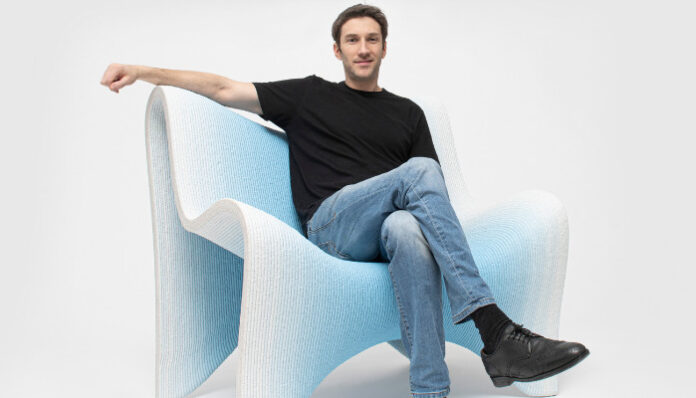Design freedom is one of the most important strengths of additive manufacturing. This is why various 3D printing processes are also being used more and more frequently in the creative industry. They offer unprecedented possibilities in the design process, meaning that there are fewer and fewer limits to creativity. For example, there is already technology can be used to replicate natural forms (bionics) or to create experimental designs. For Austrian product designer Philipp Aduatz, 3D printing has become an integral part of his design work for years. His designs are a prime example of how to take advantage of additive manufacturing. From creating the first prototype to 3D printing limited edition furniture. Philipp Aduatz spoke with us about the application of additive manufacturing to his business and explains how the technology influences his design process.
“I am a product designer from Vienna and my work is at the interface of design and art, notably working with technology and material sciences. My process is characterized by both experimental and scientific theoretical features and the result are objects in small limited editions. 3D printing has always played a role in my work. Since 2005, I have used it primarily to quickly produce small working models in the design process. In recent years, however, it is mainly the possible dimensions in 3D printing that have changed and since 2018 I also produce large objects in 1:1 scale.”
“For me personally, there are several advantages [to additive manufacturing]. The most important one for me is that no complex mold construction is necessary for production. This is primarily an economic advantage. In the past, I always had to incur large financial expenses for the production of models and molds, but this is completely eliminated by using additive manufacturing. Furthermore, minor changes and optimizations can always be made during pilot production. Even in production, adjustments can still be made if necessary. In the past, this was not possible for me; once molds were produced, it was impossible to make any more changes here. And last but not least, new forms of design expression are also a significant advantage of 3D printing; the aesthetic dimension in particular is an interesting aspect for designers.”
“Concrete 3D printing is a new and innovative manufacturing process, whereby large and complex structures in design can be printed very quickly. The company incremental3d is currently working on ways to colorize concrete in the 3D printing process as part of a research project. This involves injecting color pastes directly into the nozzle during the printing process, thereby reducing labor, waste and time delays. Thus, the color design can be selected not only globally, but locally point by point. The aim in developing the new series was to combine technology with color design in order to create innovative products in this way.”
https://www.3dnatives.com/en/philipp-aduatz-3d-printing-colorful-concrete-furniture-010620214/
Analysis
I found this article to be very interesting. It is the first of its kind where I have seen color experimentation within concrete 3D printing. To see it succeed in 3D printed furniture is truly exciting and opens a lot more doors for creative and aesthetically pleasing designs. I wonder how they created the colored paste and how they fed it through the machine. This is certainly an area I would like to explore as I develop my capstone project. Another interesting aspect of this article is the use of concrete as furniture. Concrete is not typically thought of as “comfortable” or “cozy.” To incorporate good ergonomic design, it seems even concrete can break out of the perception of being “cold, hard, blocky, and uncomfortable.”
Take-Aways
Color can be applied to concrete 3D printing – in gradients and in solid tones
Concrete doesn’t have to be uncomfortable – ergonomics can play a huge role




